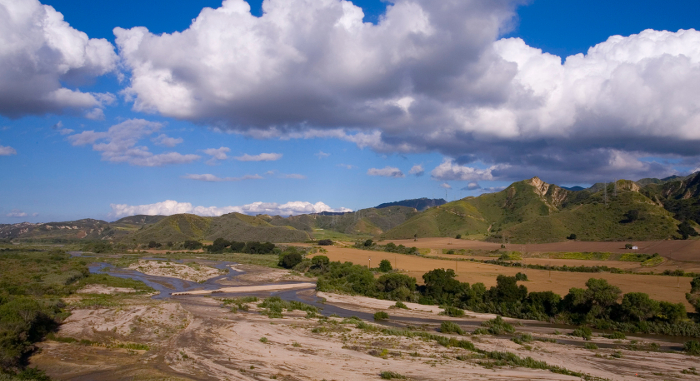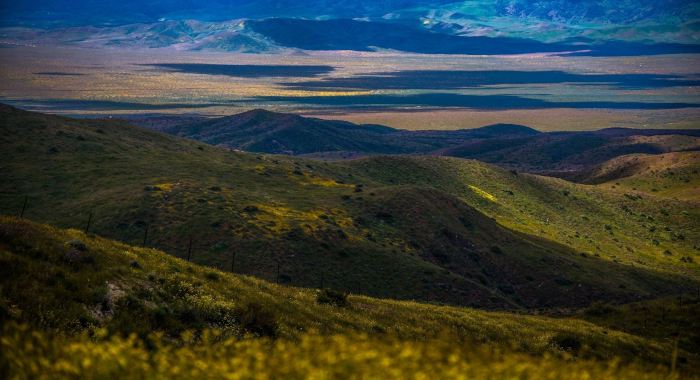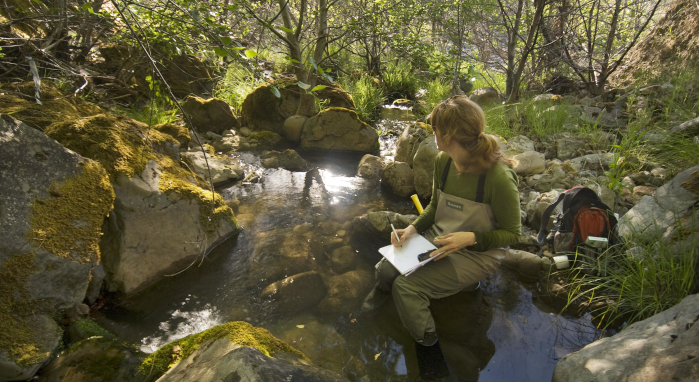California is one of the most hydrologically altered landscapes in the world. As water becomes ever more scarce and the human population continues to grow, that vast engineered system strains to meet the needs of people let alone the needs of nature.
Water rights allocations far exceed actual surface water supply, and millions of wells tap groundwater to meet the increasing demands of farms and communities. As groundwater reservoirs are depleted they can in turn reduce surface flows – exacerbating a vicious cycle in which people and nature both lose. Rivers, wetlands and groundwater-dependent ecosystems are caught in this struggle for an increasingly limited resource. Nearly half of California’s roughly 4,000 freshwater species are considered vulnerable to extinction. Of the taxa that are found nowhere but California – our endemic freshwater biodiversity – 90 percent are at risk.
But there is hope. While it is impossible to return natural flows to most of California’s rivers and streams, we can – through science, technology, and innovative market tools – endeavor to deliver water when and where nature needs it most.




Timothy C. Bonebrake, Christopher J. Brown, Johann D. Bell, Julia L. Blanchard, Alienor Chauvenet, Curtis Champion, I-Ching Chen, Timothy D. Clark, Robert K. Colwell, Finn Danielsen, Anthony I. Dell, Jennifer M. Donelson, Birgitta Eveng°ard, Simon Ferrier, Stewart Frusher, Raquel A. Garcia, Roger B. Griffis, Alistair J. Hobday, Marta A. Jarzyna, Emma Lee, Jonathan Lenoir, Hlif Linnetved, Victoria Y. Martin, Phillipa C. McCormack, Jan McDonald, Eve McDonald-Madden, Nicola Mitchell, Tero Mustonen, John M. Pandolfi, Nathalie Pettorelli, Hugh Possingham, Peter Pulsifer, Mark Reynolds , Brett R. Scheffers, Cascade J. B. Sorte, Jan M. Strugnell, Mao-Ning Tuanmu, Samantha Twiname, Adriana Verg´es, Cecilia Villanueva, Erik Wapstra, Thomas Wernberg , Gretta T. Pecl
Climate change is driving the largest global redistribution of the planet’s species since the ice age. Species redistributions present challenges for human well-being, environmental management…Melissa M. Rohde, Ray Froend, Jeanette Howard
Groundwater is a vital water supply worldwide for people and nature. However, species and ecosystems that depend on groundwater for some or all of their water needs, known as groundwater dependent…Kristen E. Dybala, Neil Clipperton, Thomas Gardali, Gregory H. Golet, Rodd Kelsey, Stefan Lorenzato, Ron Melcer, Jr., Nathaniel E. Seavy, Joseph G. Silveira
The Conservancy and partners are working to establish riparian ecosystems that provide sufficient habitat to support genetically robust, self-sustaining, and resilient bird populations in…Kristen Wilson, Erik Lowe, Stacey Wolny, Barry Nickel , Rodd Kelsey
This study demonstrates how science-based planning with stakeholder input can improve and direct conservation investments across existing state and jurisdictional boundaries. The authors set out to…Burns, C.E., A. Hoss, N. Smith, K. Klausmeyer, K. Fesenmeyer, A. Campbell, J. Carah, E. Forsburg, S. Heard, J.K. Howard, L. Hulette, S. Liu, P. Spraycar, B. Stranko, G. Werner, D. Wordham
This report identifies a set of strategies that will have the greatest impact on environmental flows, and to provide a resource for conservation organizations, resource agencies, and other…Debra Perrone, Melissa M. Rohde
Managed aquifer recharge (MAR) projects can play an important role in ensuring California manages its groundwater sustainably. This study, the first to investigate the benefits and economic costs…Christopher J. McColl, Katie Andrews, Mark Reynolds, Gregory H. Golet
In response to the decline of wetland habitats for migrating and wintering water birds in California, the Conservancy developed a program called BirdReturns that creates “pop-up”…Tamara S Wilson, Benjamin M Sleeter, D Richard Cameron
This publication discusses how land use changes in Mediterranean California will drive changes in water use between urban uses and annual vs. perennial crops. The authors used a state-and-transition…Kirk Klausmeyer, Jeanette Howard, Sandi Matsumoto, Sally Liu, Melissa Rohde
Groundwater is essential to the health and viability of plants, animals and ecosystems. Many tree species, like willows and cottonwoods, rely on groundwater to survive seasonal and annual dry spells.…